— OCTOBER 5, 2019 – JANUARY 5, 2020, at the New Mexico Museum of Art —
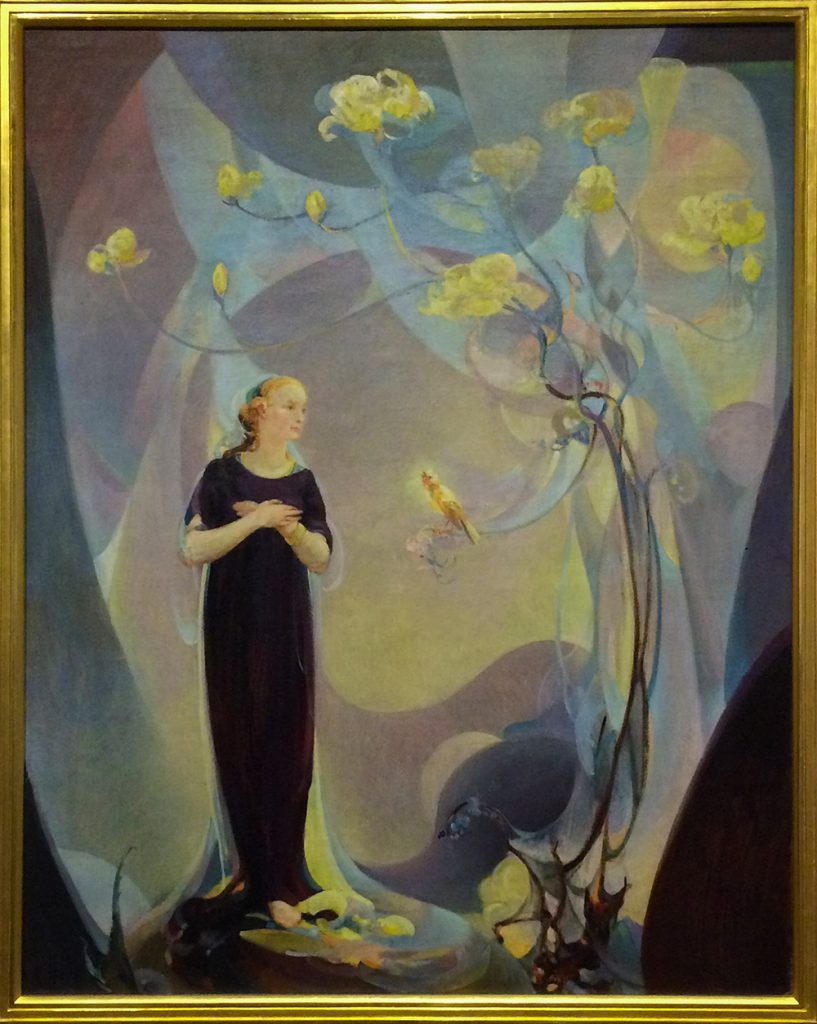
Room Decoration in Purple & Gray, 1917 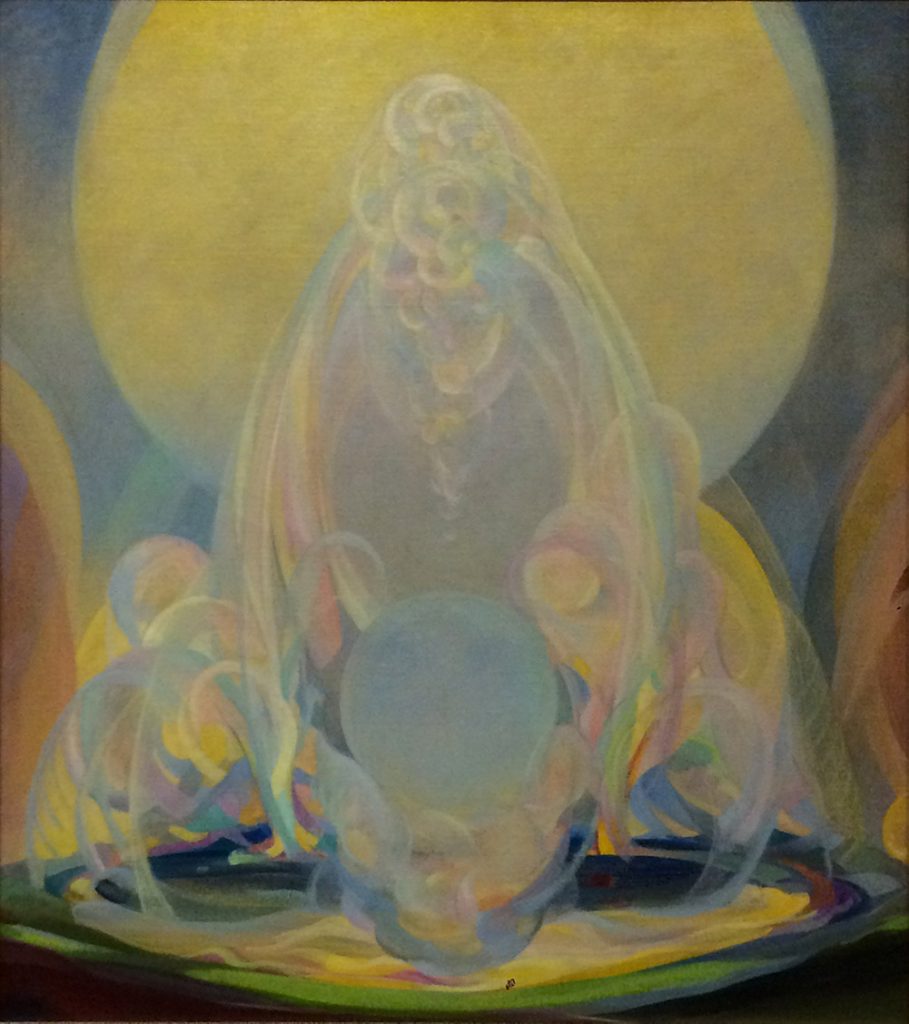
The Fountains, 1926 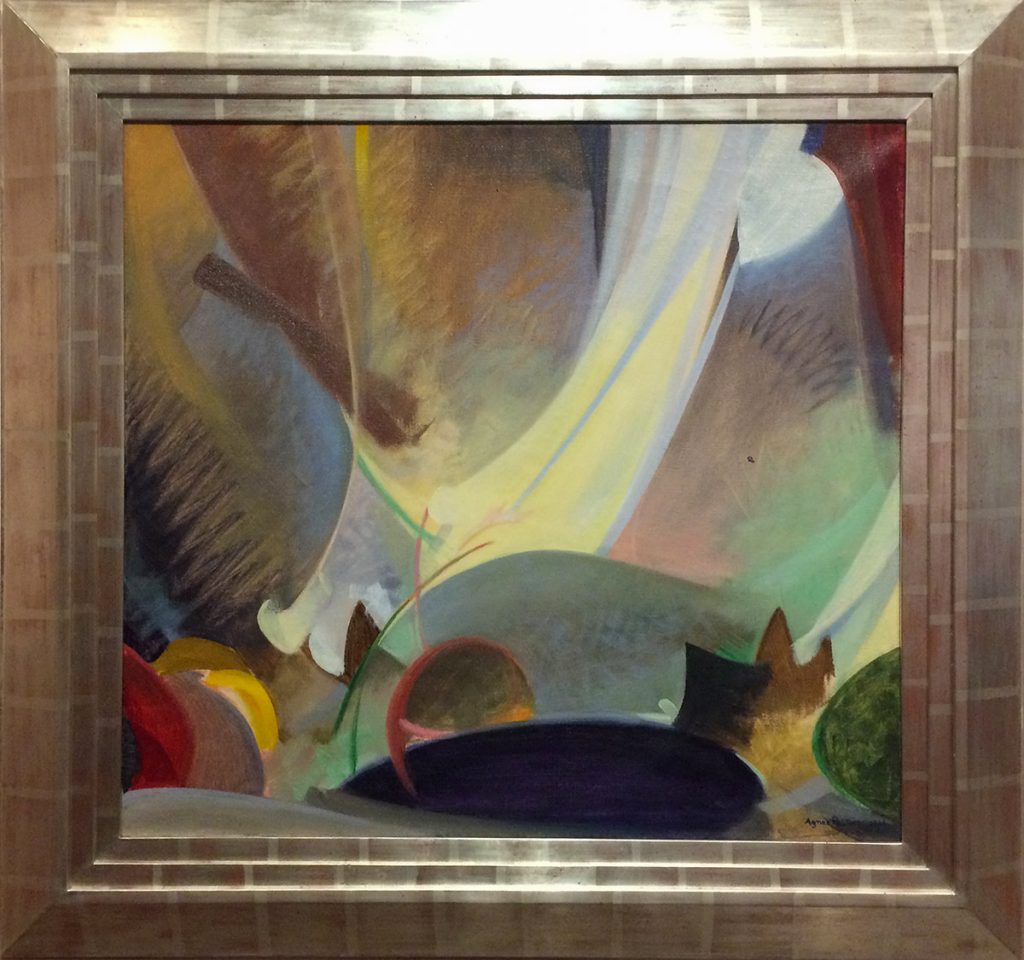
The Ray Serene, 1926 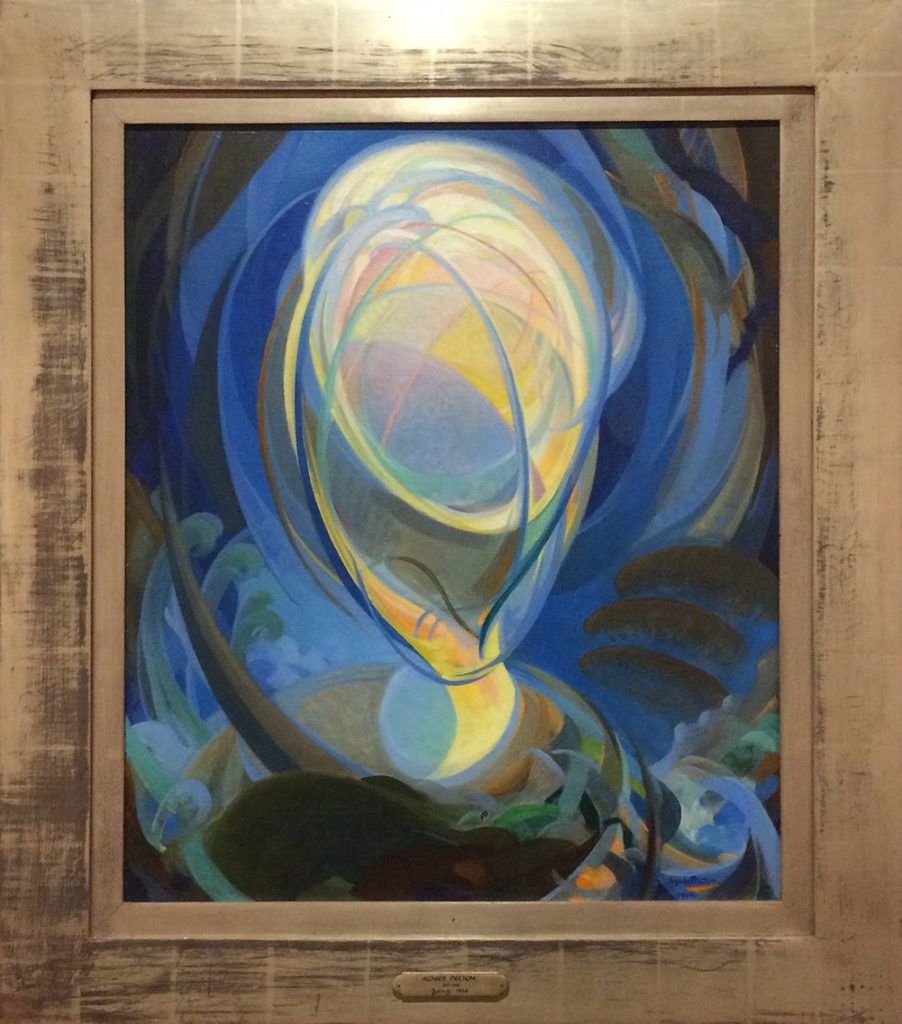
Being, 1926 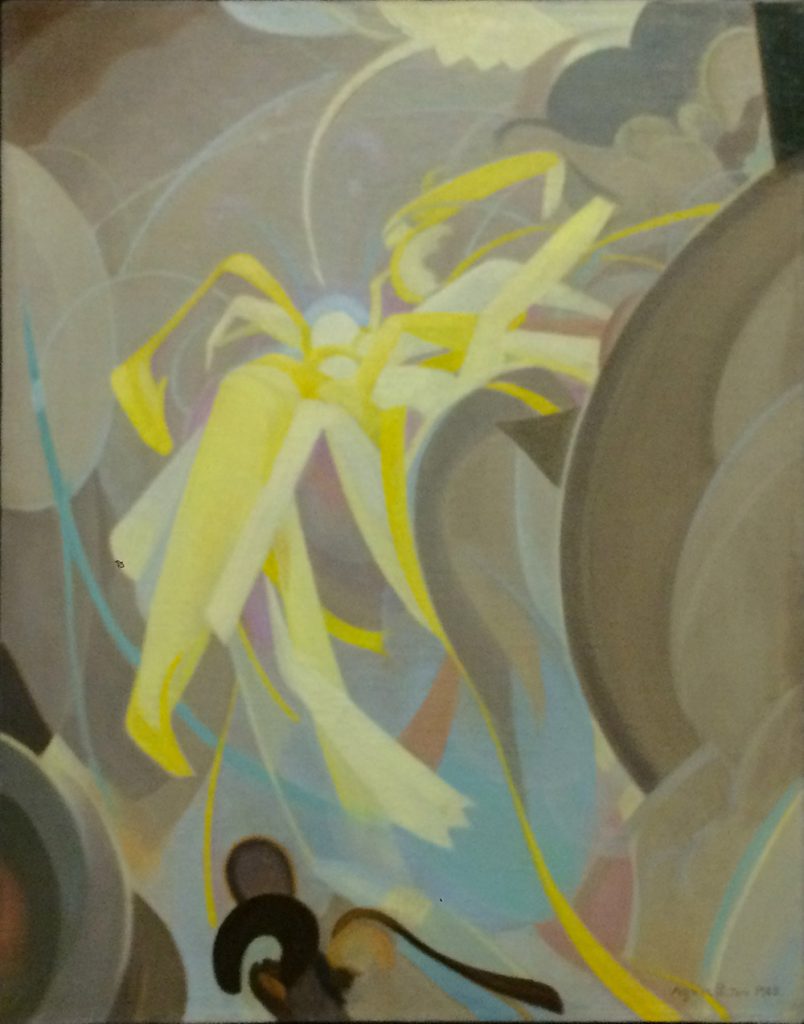
Ecstasy, 1928 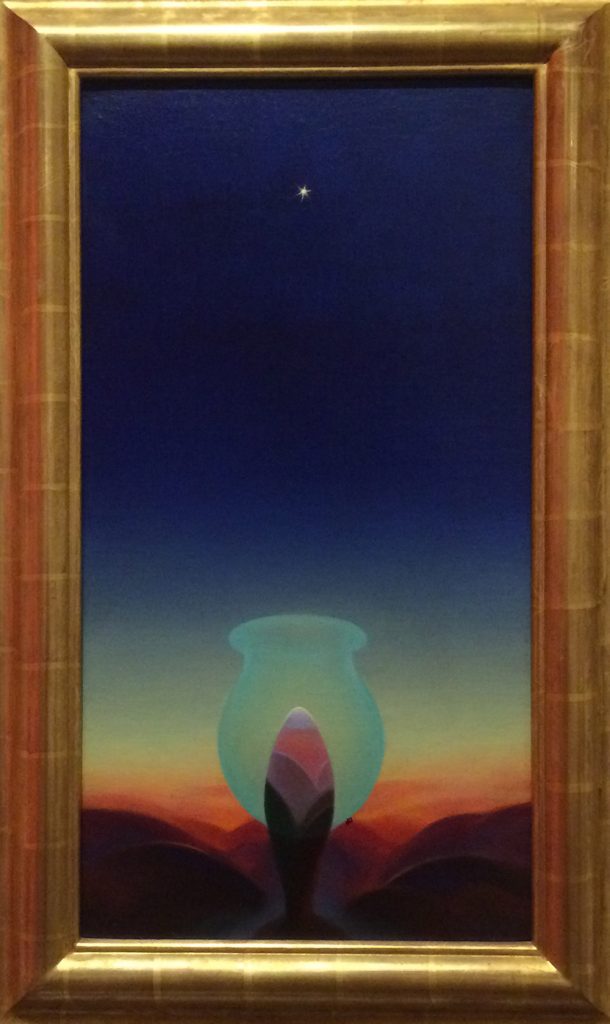
Star Gazer, 1929 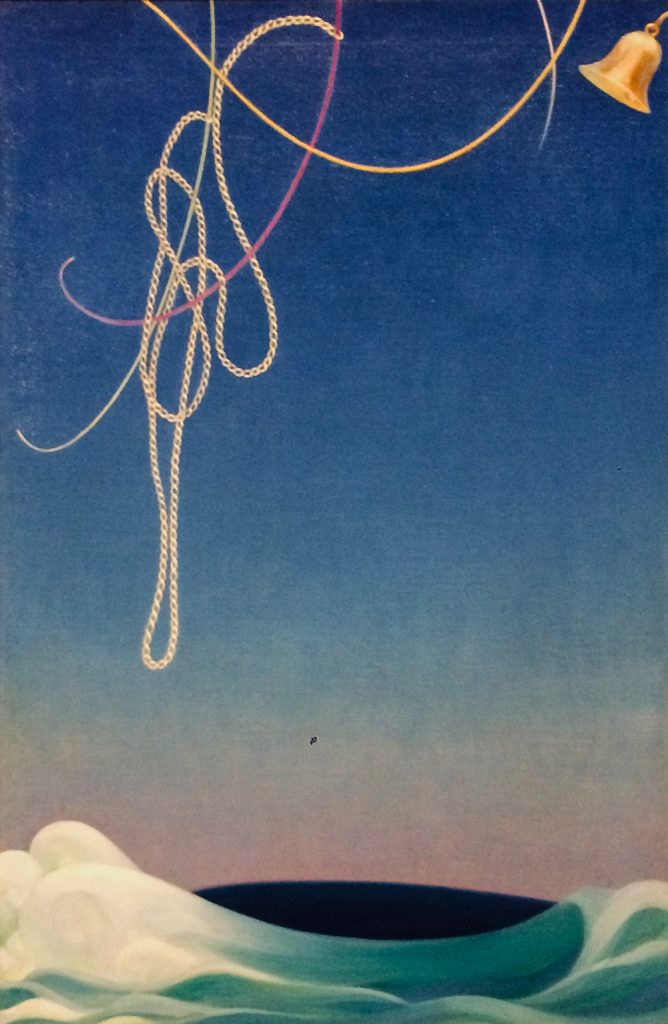
Voyaging, 1931 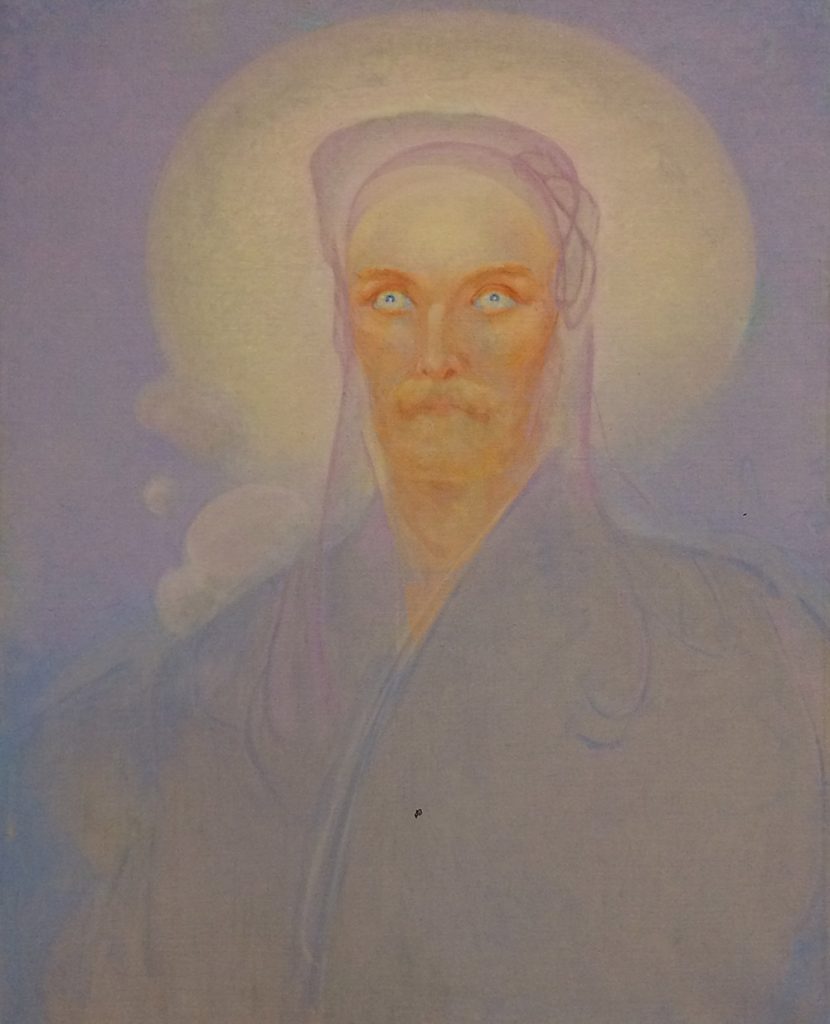
Intimation, 1933 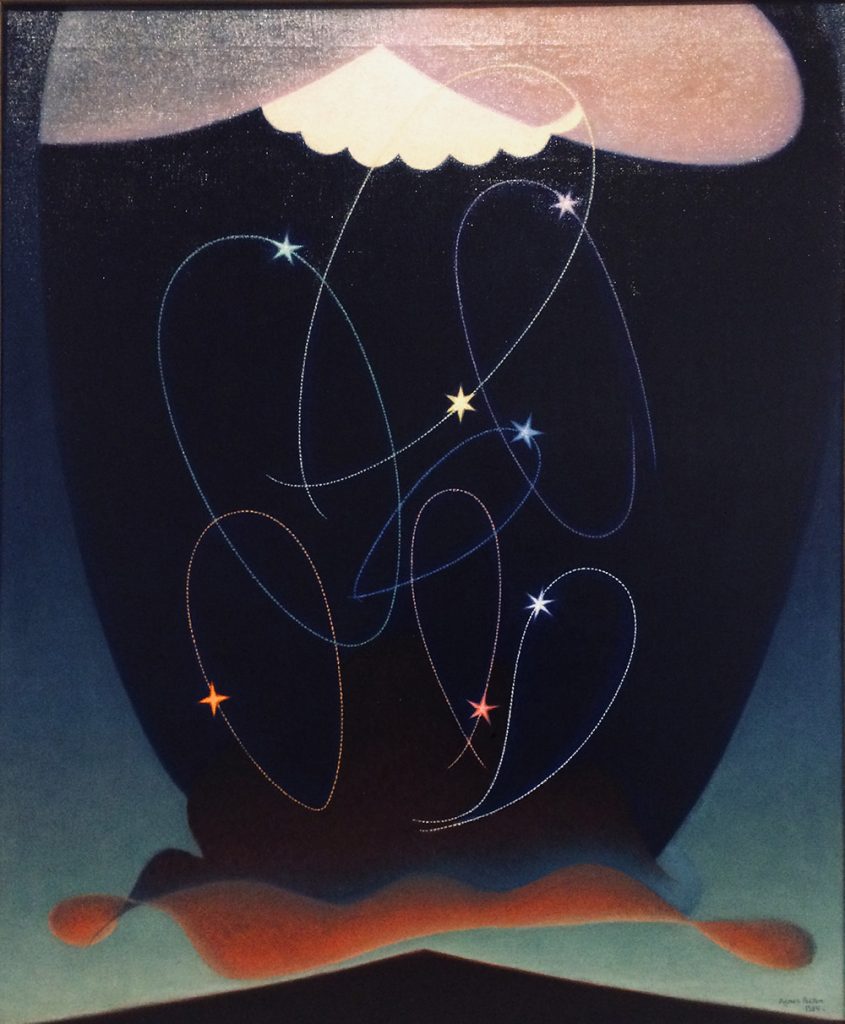
Orbits, 1934 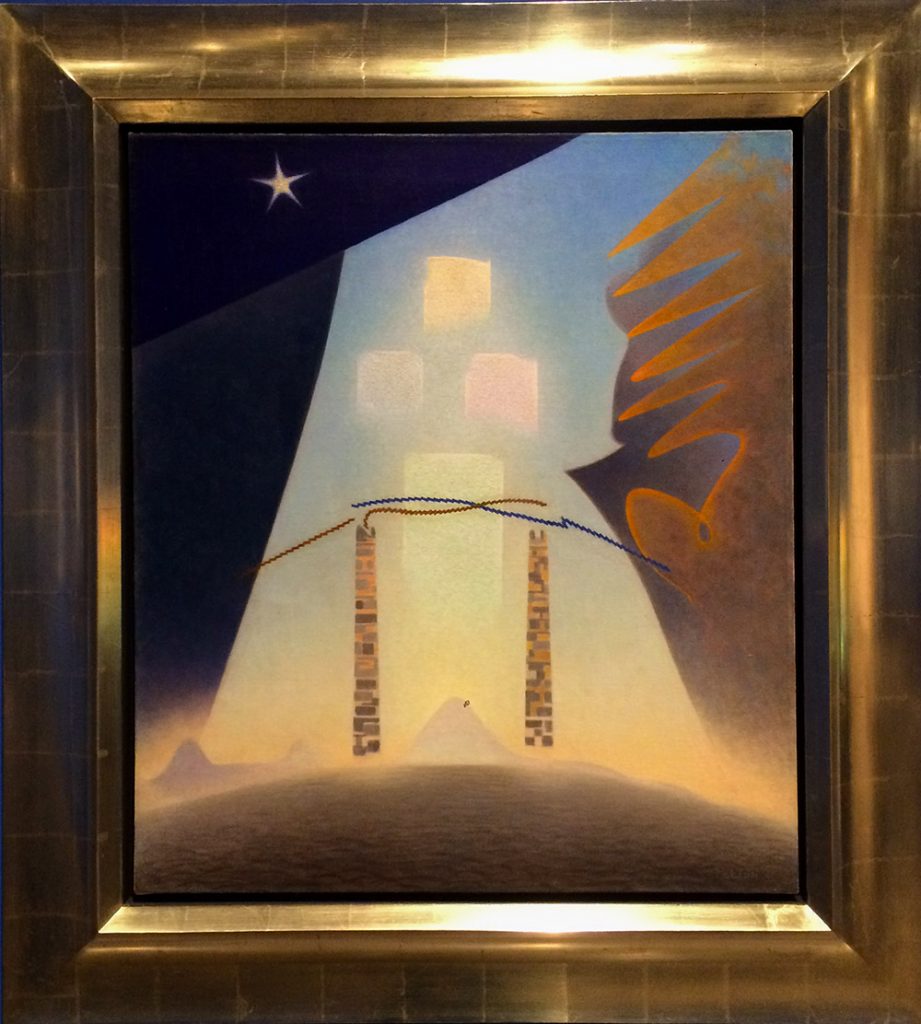
Future, 1941 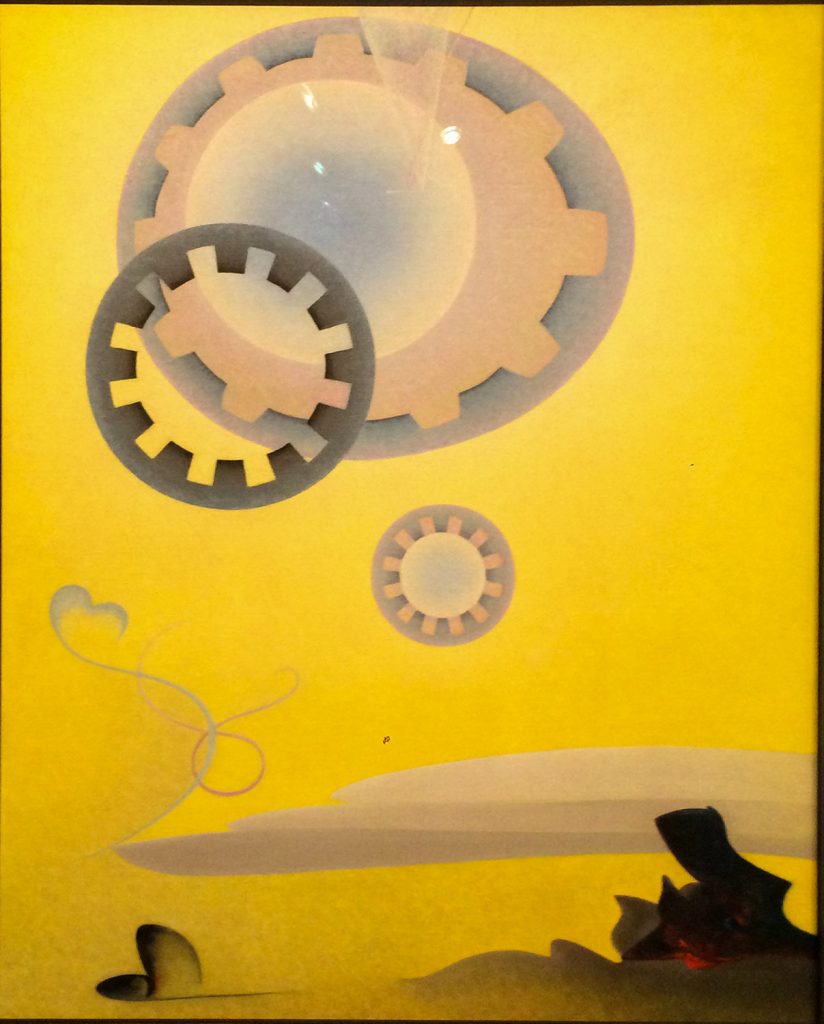
Prelude, 1943 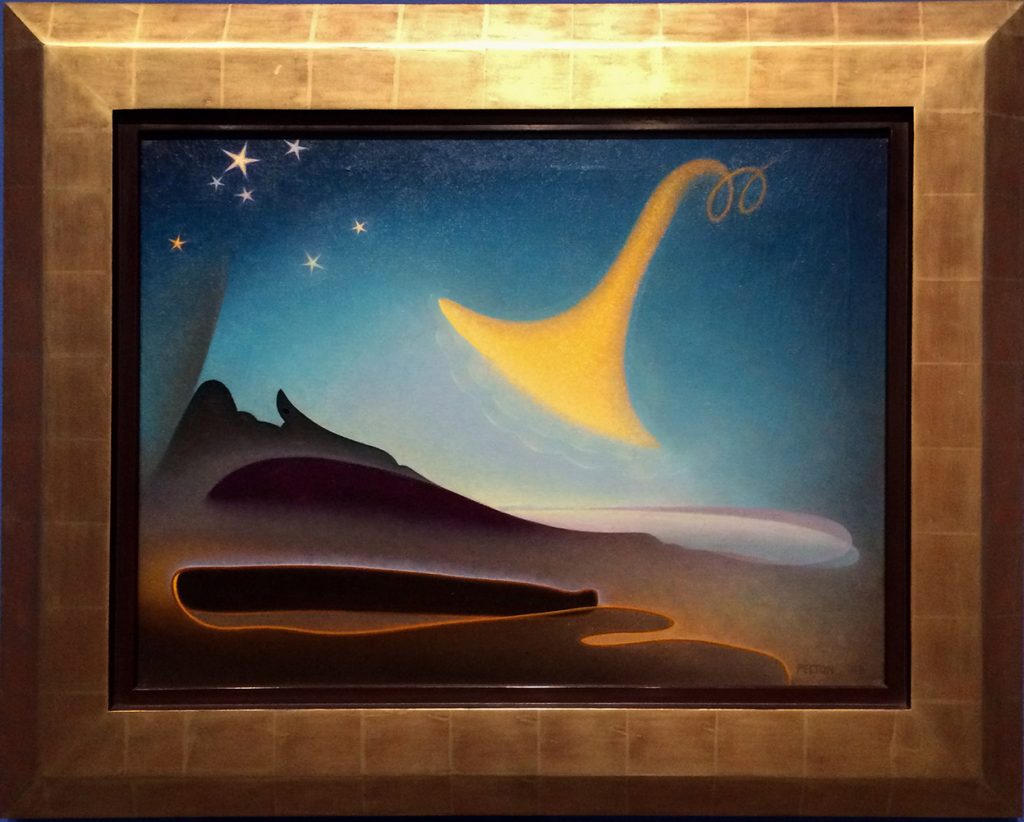
Awakening, 1943 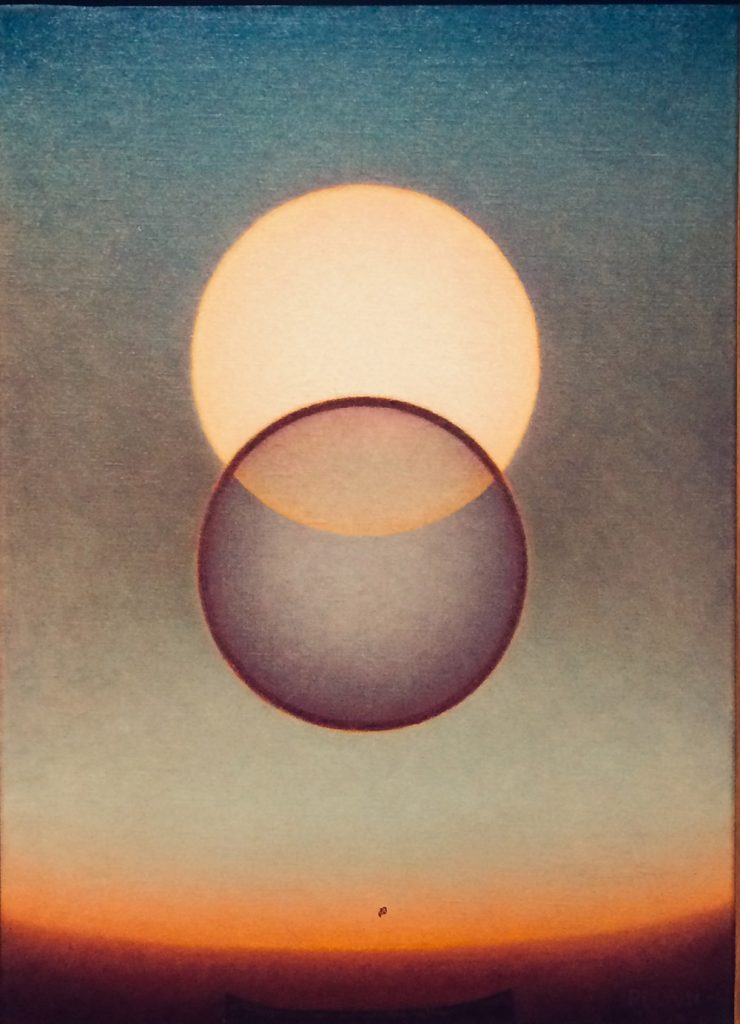
Departure, 1952 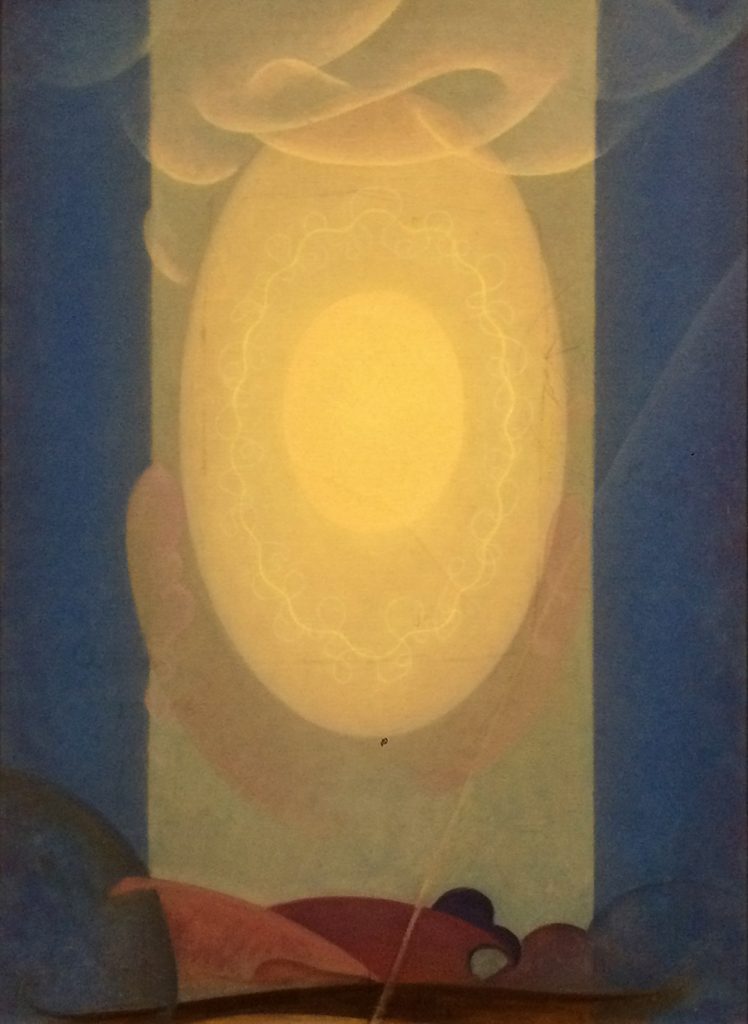
Light Center, 1960-1
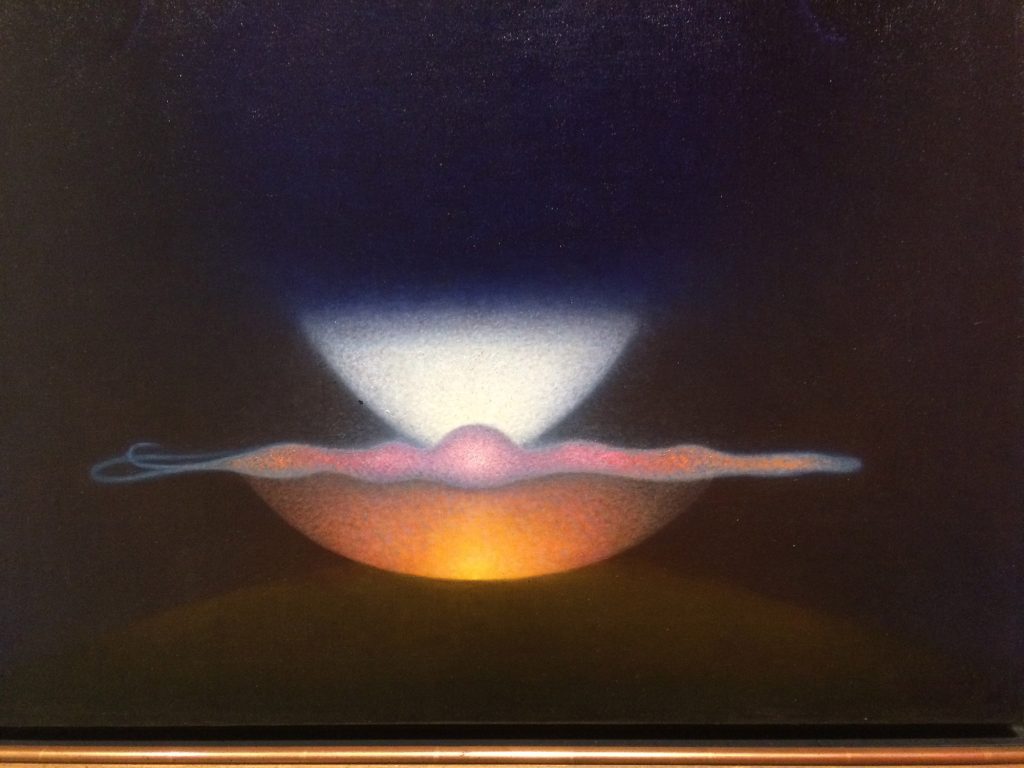
We start our conversation, me and Agnes Pelton, with a joke: Room Decoration in Purple and Gray from 1917. If Pelton was with Duchamp at the 1917 show put on by the Society of Independent American Artists she might have gone to the far back room and seen his urinal, or the one attributed now to him, but at the time was signed R.Mutt. She might have seen the piece that some people call the most important work of the 20th Century, and the one you may know is call Fountain. You probably have seen the photograph that Georgia O’Keefe’s husband took of the piece, and you may even have read that Duchamp may not have been the actually artist who made the piece, and that he told his sister that it had been made by a woman friend of his and many women’s studies experts think might have been his friend Elsa vonFreytag Loringhoven. Women were involved in art making at this time, Dada was open to socialists, communism and women suffragettes.
Since Pelton had shown with Duchamp in the Armory Show, also in New York, but in 1913, I’d love to ask her if she knew what was happening in painting and the whole anti-tangible art movement of Dada that had immigrated to the U.S. with Duchamp and others avoiding the draft and war in Europe. Then I read her title again, and laugh again. Room Decoration – she knew.
When we do our best full woman-length portrait we women know we have been looked at as mere room decoration, either our carriage or in the painting. But I question myself, am I just applying 21st Century sensibilities to the work, and decide there is no harm it taking an artist at her best. Would I assume a male artist didn’t know what his place would be in the world in the future, that he wouldn’t have an understanding that visual art was heading to the very abstract and away from decoration? Taking her as someone smart that I could talk to today, made me open to the rest of her work. And why not approach an artist that way?
The Fountains is the title she gave to the second painting I added to our conversation, which made me laugh again because it is so close to what Duchamp’s piece was titled by whoever made that joke back in 1917. When paintings are this abstract, painters have wobbled between giving them names, probably after they were finished, or numbering them. Untitled #19 for example is hard to remember when you’re talking about moving it around, sending it to a show, and so I think she chose names. Being a painter and a poet was popular in the 1920, for women it seems more popular: Mina Loy, Francis Farr, (Bob Dylan) and so when Pelton puts words into the description of her painting, it doesn’t make me think she’s flaky and into crazy spiritualism. My companions at this show were put off by this.
Words strung together into phrases
did not ground the water painted;
poem is not a report of Fountains
but of the making of object: paintings or poems
Ethereal blues hardly stay on canvas
Reflections of sun the hot remains
Pelton’s paintings with bold, bright colors are more appealing to me personally than the more etherial ones like Fountians, but they have a quality like drapery that makes them very nice in person. The bolder colored works we more difficult to make use of transparency techniques but as she grows as a painter she adds some that I’ve not seen in other painters of the era. Alchemy is a great painting, and I’ll add a detail of it so that you can see the textures she adds. And Pelton’s use of drawing, as in the strings and orbit lines in some of these paintings, are joyfully fun.
For the painting Intimation, the sitter was a Russian national that Pelton knew and studied under to learn a form of yoga. She did paintings of both this man and his wife, and they aren’t the best in the show. She did some other paintings that she hoped would advance her influence in the art scene and give her admittance into an art movement. The curators tell us that she gave up on this by the 1940s and just painted the landscapes of the dessert that she had begun when she visited Mabel Dodge in Taos, and that sold well.
The curators included a great story next to the artists last paintings. Apparently, an art historian found one of Agnes Pelton’s paintings in an art center’s rummage sale priced at $40. This was in the 1960s, if I remember correctly, and when the art historian raced off to the bank to get cash to buy the piece and when she returned it had been marked down to $15. Of course, the set us off on speculation about what other paintings by this woman might be out in the world and are undervalued, under appreciated, and shipped off to the Goodwill by people cleaning out their loved ones estates. My companions and I have become follows of the British TV show “Fake or Fortune” and we each did our impressions of the host as he discovers the work, bought for under $40, of an artists with a one-woman show at the New Mexico Museum of Fine Art.

